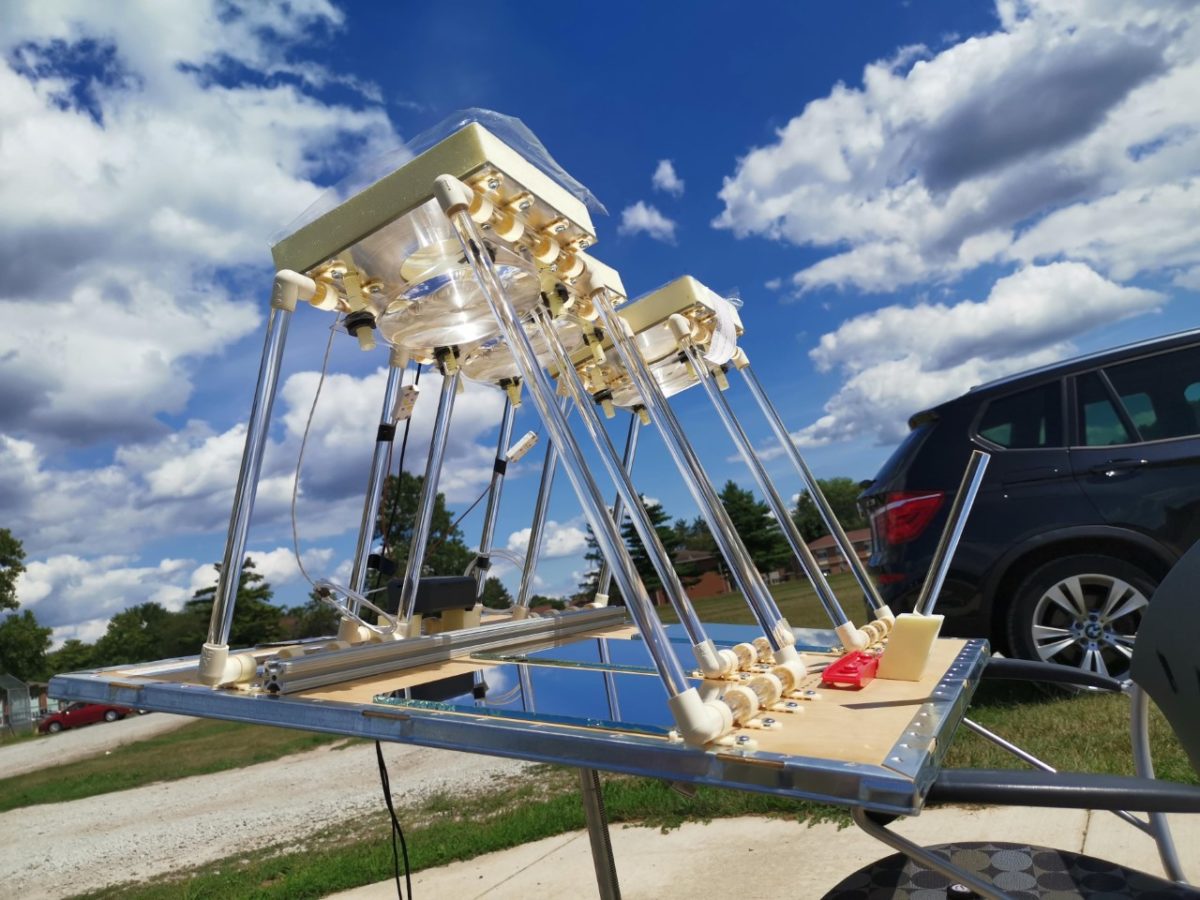Scientists at Purdue University have demonstrated a CPV system integrated with radiative coolers which they claim can operate at a lower temperature and higher open-circuit voltage compared to common CPV devices based on gallium antimonide (GaSb) solar cells.
In their prototype, the researchers tested three different cooling structures under a range of wind speeds and solar heat loads. “We also conducted multiple outdoor experiments covering the worst and best possible working scenarios for radiative cooling to check the overall performance,” they explained.
Two soda-lime glass radiative coolers were deployed on both sides of the CPV system's heat sink. The test was conducted on a measurement platform consisting of three chambers equipped with a Fresnel lens with an effective diameter of six inches and aluminum mirrors. A first chamber contained the CPV device with the coolers and a second chamber hosted an identical system without the cooling tech. The first chamber had a sealed-chamber structure with top low-density polyethylene (LDPE) films, while the second had an open structure. The first configuration, according to the research team, reflected the zero wind speed working condition of CPV, as the LDPE film can cut off direct convection from the heat sink to ambient air.

Image: Purdue University
A third chamber only had a thermal power sensor to monitor the incident solar power.
“Upon direct solar heating, temperatures rose significantly in both chambers, thus reducing for both cells at different rates,” the scientists stressed. “More specifically, the temperature of Chamber 1 (with coolers) increased more slowly than the temperature of Chamber 2 (without coolers), as expected.” The average focused solar irradiance during the experiment was around 6.1 W, corresponding to a direct normal irradiance (DNI) of 1,019 W/m.
This ensured that the temperature in the GaSb cell range dropped by a minimum of 5 to a maximum of 36 degrees Celsius. “To our knowledge, the maximum temperature drop even outperformed some active air cooling methods,” the academics stated.
The temperature decrease provided by the cooling system has resulted in an increase in the cell's open-circuit voltage of between 8% and 27%. “The results clearly show that radiative cooling benefits all cases, despite variations in heat sinks and weather conditions,” they also specified.
The US group claims that the temperature drops provided by the radiative cooling technique may significantly improve the lifetime of CPV systems. “With radiative cooling, PV can work under higher solar concentrations at the same temperature, to potentially improve efficiencies and power outputs,” they concluded. “We hope that this work can help to motivate further studies on commercially relevant CPV cooling designs, as well as other systems, which may benefit from radiative cooling.”
The radiative cooling technique is presented in the paper Lightweight, Passive Radiative Cooling to Enhance Concentrating Photovoltaics, published in Joule.
This content is protected by copyright and may not be reused. If you want to cooperate with us and would like to reuse some of our content, please contact: editors@pv-magazine.com.




3 comments
By submitting this form you agree to pv magazine using your data for the purposes of publishing your comment.
Your personal data will only be disclosed or otherwise transmitted to third parties for the purposes of spam filtering or if this is necessary for technical maintenance of the website. Any other transfer to third parties will not take place unless this is justified on the basis of applicable data protection regulations or if pv magazine is legally obliged to do so.
You may revoke this consent at any time with effect for the future, in which case your personal data will be deleted immediately. Otherwise, your data will be deleted if pv magazine has processed your request or the purpose of data storage is fulfilled.
Further information on data privacy can be found in our Data Protection Policy.